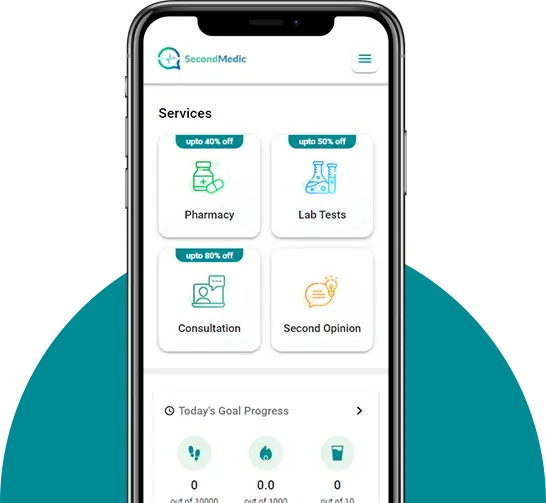- Published on: Mar 18, 2024
- 2 minute read
- By: SecondMedic Expert
Beating Food Cravings: Tips To Resist Temptation
We've all been there – facing a relentless urge for that chocolate bar or a bag of chips even when we know we shouldn't. Food cravings can be a real challenge, but with the right strategies, you can resist temptation and stay on track with your health goals. In this blog, we'll explore some effective tips to help you beat those cravings once and for all.
Understanding Food Cravings:
Before diving into the tips, it's important to understand what causes food cravings in the first place. Cravings can be triggered by various factors including emotions, hormones, or even nutrient deficiencies. When we're stressed or feeling low, our brains often seek comfort in familiar foods high in sugar, fat, or salt. Additionally, hormonal fluctuations, especially in women, can intensify cravings during certain times of the month. Recognizing these triggers is the first step towards overcoming them.
Tip 1: Stay Hydrated
Believe it or not, sometimes our bodies mistake thirst for hunger, leading to unnecessary cravings. By staying hydrated throughout the day, you can reduce the likelihood of experiencing false hunger pangs. Keep a water bottle handy and aim to drink at least 8 glasses of water daily. Herbal teas and infused water are also excellent options to keep you hydrated and curb cravings.
Tip 2: Eat Balanced Meals
Maintaining a balanced diet rich in whole foods can help stabilize blood sugar levels and prevent sudden cravings. Make sure your meals contain a combination of complex carbohydrates, lean proteins, and healthy fats to keep you feeling satisfied for longer periods. Including plenty of fruits, vegetables, and fiber in your diet can also help curb cravings by promoting a sense of fullness and providing essential nutrients.
Tip 3: Plan Ahead
One of the most effective ways to combat food cravings is by planning your meals and snacks in advance. When hunger strikes, it's easy to reach for convenient but unhealthy options. By preparing nutritious snacks like cut-up fruits, raw veggies, or homemade trail mix, you'll be less tempted to indulge in junk food. Keep healthy options readily available in your fridge or pantry to avoid impulsive eating.
Tip 4: Practice Mindful Eating
Mindful eating involves paying attention to your food choices and eating habits without judgment. Take the time to savor each bite, chew slowly, and listen to your body's hunger and fullness cues. Avoid distractions like watching TV or scrolling through your phone while eating, as this can lead to overeating and mindless snacking. By being present and mindful during meals, you'll be better able to control cravings and make healthier choices.
Tip 5: Find Alternative Ways to Cope with Stress
Many of us turn to food for comfort when we're stressed or anxious, but there are plenty of other ways to cope that don't involve eating. Engage in activities like exercise, meditation, journaling, or spending time with loved ones to relieve stress and boost your mood naturally. Finding healthy outlets for stress can help reduce the frequency and intensity of food cravings over time.
Tip 6: Get Enough Sleep
Lack of sleep can disrupt hunger hormones and increase cravings for unhealthy foods. Aim for 7-9 hours of quality sleep per night to support overall health and reduce the risk of cravings. Establish a relaxing bedtime routine, avoid caffeine and screens before bed, and create a comfortable sleep environment to improve sleep quality.
Conclusion:
Food cravings can be a major obstacle when trying to maintain a healthy lifestyle, but with patience and persistence, they can be overcome. By implementing these tips into your daily routine, you'll be better equipped to resist temptation and make healthier choices. Remember to listen to your body, practice self-care, and celebrate your successes along the way. With determination and the right strategies, you can beat food cravings and achieve your wellness goals.
Read FAQs
A. Control fast food temptations by planning meals ahead, keeping healthy snacks accessible, and finding satisfying alternatives.
A. Beat temptation food by practicing mindful eating, staying hydrated, and finding healthier ways to cope with stress.
A. Control diet cravings by eating balanced meals, staying hydrated, and practicing mindful eating to recognize true hunger cues.










